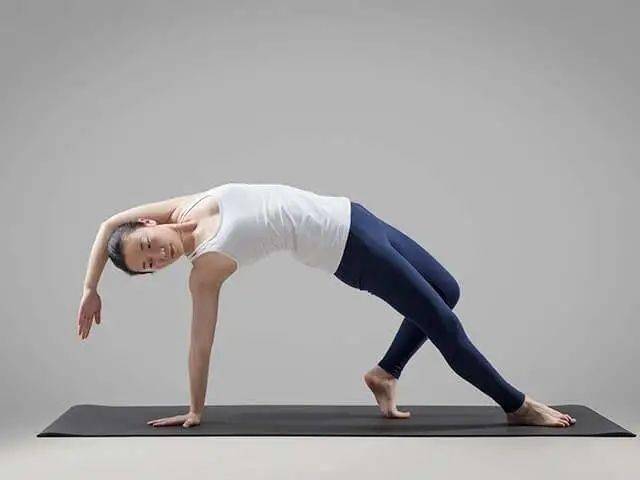Sneezing, coughing and being unable to hold back urine, frequent urination, and urgency, these may be problems with your pelvic floor. Urinary incontinence, a seemingly insignificant disease, has a negative impact on life, work, social life, and psychology. In severe cases, it may even lead to suicide. Many patients may suffer from depression as a result, and many couples may part ways. Urine leakage can actually be prevented. If one day, unfortunately, you leak urine, you may not have done these 5 things.

1. Judge for yourself
If you unconsciously have urine outflow without warning, if you laugh, walk, run, suddenly leak urine when you suddenly stand up, if you frequently go to the toilet every day, increase nocturnal urine, and have not run to the toilet. If you have peeed your pants, please pay attention to it and go to the hospital as soon as possible.
2. Change bad lifestyle
Young people love to play with mobile phones, even when they go to the toilet, which will cause longer time to go to the toilet. In the long run, it will easily lead to constipation. Many people in modern times like to eat delicate foods, resulting in less dietary fiber. In addition. Long-term coughing, heavy physical labor, and other behaviors that increase abdominal pressure for a long time will keep the pelvic floor muscles under pressure, and the pelvic floor muscles will continue to be damaged, eventually leading to pelvic floor relaxation and clinical symptoms such as urine leakage and decreased pelvic floor function. .
3. Pelvic floor inspection
Studies have shown that women aged 46-55 and older than 65 are the peak periods of urinary incontinence. Therefore, regular pelvic floor muscle screening is very important for middle-aged and elderly women. The highest incidence of pelvic floor dysfunction such as urinary incontinence in postpartum women can reach 41%.
In normal delivery or cesarean section, the pelvic floor function will decrease to varying degrees, and even severe muscle strength will decrease. Some women have urine leakage during the confinement period. Increase the pelvic floor muscle screening for 42 days postpartum and evaluate the pelvis early. Damaged floor muscles and recovery of pelvic floor function to prevent social cancer.
4. Adhere to family pelvic floor training
Kegel exercise or the use of vaginal dumbbells can effectively improve pelvic floor function and prevent or improve pelvic floor dysfunction diseases such as urinary incontinence. Studies have shown that using vaginal dumbbells for pelvic floor exercises 42 days postpartum, 6 months after delivery, it was found that the pelvic floor muscle strength of the parturient was significantly improved, the symptoms of urinary incontinence were significantly reduced, and the effective rate of pelvic floor diseases reached 93.3%.

Pregnancy and childbirth are independent risk factors for the occurrence of pelvic floor dysfunction diseases such as urinary incontinence. If pregnant mothers can start Kegel exercise during pregnancy, it can effectively reduce the impact of pregnancy and childbirth on the pelvic floor, improve the chance of giving birth, and reduce The occurrence of social cancer after childbirth. From the 16th week of pregnancy, pregnant women can take Kegel exercise. The earlier Kegel exercise, the better the effect.
5. Regular pelvic floor rehabilitation
The British clinical guidelines on urinary incontinence suggest that pelvic floor rehabilitation exercise treatment should be maintained for at least 12 weeks. For postpartum women, there are different opinions in the literature on when to start pelvic floor rehabilitation. In general, starting pelvic floor rehabilitation at different times after childbirth can effectively improve the pelvic floor function of postpartum women, and starting pelvic floor rehabilitation at different times There is no difference in the effect of training. Most opinions believe that 42 days to 6 months postpartum is the golden period of pelvic floor rehabilitation.
For middle-aged and elderly women, it is recommended to add pelvic floor muscle screening to cancer screening, and then perform pelvic floor rehabilitation based on the results of pelvic floor function assessment. If there is no pelvic floor dysfunction such as urine leakage, it is also recommended to perform pelvic floor rehabilitation at least once a year. In addition, after pelvic surgery such as hysterectomy, it is necessary to perform postoperative pelvic floor rehabilitation in time when the surgical stump has healed well and no hard scar has formed, so as to better restore pelvic floor function. The combination of electrical stimulation, magnetic stimulation, biofeedback and family pelvic floor exercises will improve the pelvic floor function better and last longer. Do the above 5 things, stay away from the embarrassment of leaking urine, and get rid of the trouble of leaking urine.
2022-06-29
2022-06-16
2022-05-24
2022-04-28
2022-04-18
2022-03-17
2022-03-16
2022-03-14
2022-02-15
2022-01-21